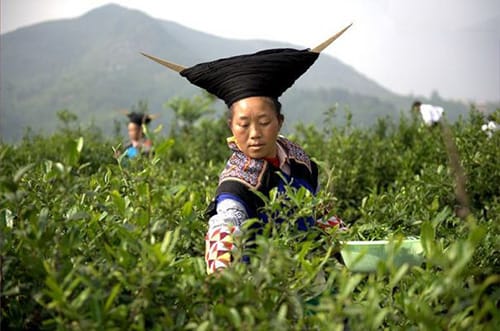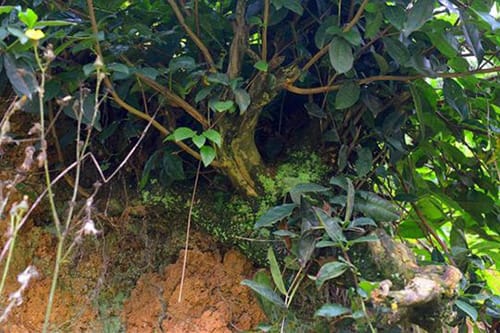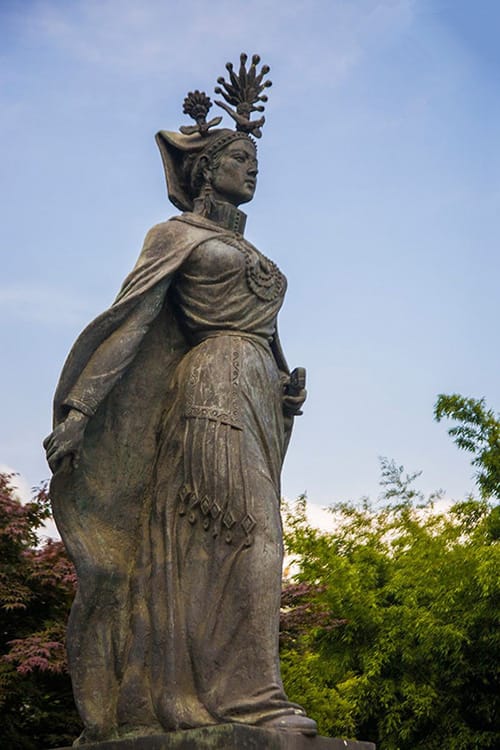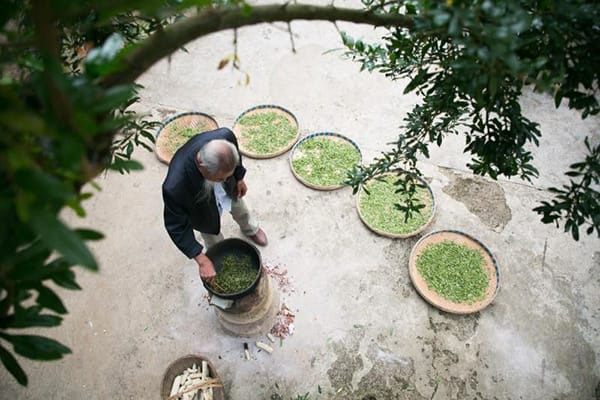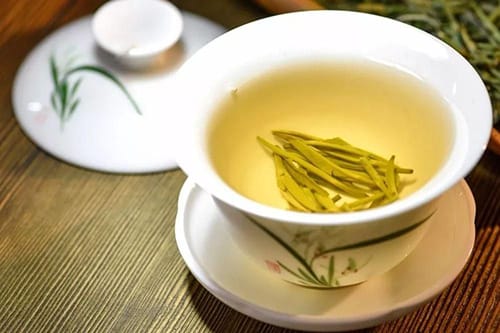Last Updated on 04/18/2021 by Desmond
Yellow tea is the rarest in the 6 major teas; the low yield and market share create a vicious circle. Some subtypes even come to an unable selling situation. The Haimagong tea from Guizhou, China, is an example. The tea masters keep producing it just not to let this culture dies.
CONTENT
What Is Haimagong Tea
Haimagong tea belongs to Yellow Large Tea, which originated in Haimagong village, Guizhou. This is a settlement of a Chinese ethnic group – the Yi people. Haimagong is a transliterated word from “Gumogu.” In the Yi language, it means the elephant valley. Here was the place for war elephant training in ancient times.
The total area of tea plantations in Haimagong village is about 500 hectares, including the new and the old ones. The local climate is cold, and the annual average temperature is about 13℃. But it’s mountains around and a river in the front, which can protect it from the cold current directly attack. Some ancient tea trees are still growing strong here. The region is up to 1500 meters altitudes, so the teas that originated here belongs to the high-mountain tea, which contains richer nutrients. The mean annual precipitation is between 1000-1200, and the humidity keeps at 80%. High altitude, low latitude, short sunlight time, and lots of fog make the excellent quality of Haimagong tea.
Haimagong village has tea-producing for over 600 years. It is said in the Ming Dynasty, a local tribal leader – Madame Shexiang, paid the tea as a tribute to Emperor Zhu Yuanzhang. The king loved it after tasting, and he decided to build a road to connect there. And this gave a great help on the economics and culture developing in Haimagong.
Later, in the Qing Dynasty, an officer in Guizhou also fell in love with Haimagong tea. He thought its quality still has a big room for improvement, so he taught the local tea masters a more advanced processing method, which for making “Zhu Ye Qing tea.”
Zhu Ye Qing tea is the earliest name of Haimagong tea. But in Sichuan, there is a green tea also name Zhu Ye Qing. In 1999, a Sichuan tea company registered the trademark Zhu Ye Qing successfully. And the one in Guizhou had no choice but to change its name in Haimagong tea.
Processing & Flavor
Haimagong tea starts harvest from several days before Guyu (a Chinese solar term.) The picking standard is one bud and the first leaf, or to the second or the third leaf. After picking, the source leaves will be through:
- Frying
- First Rolling
- Sealing Yellow
- Rerolling
- Re-frying
- Rerolling
- Drying
Sealing Yellow is the most essential step. Tea masters rub the leaves into a group, package them with a wet cloth, put them in a pot, and compress them with the lid for 24 hours.
During this period, the leaves will turn yellow by the heat and moisten effect and forms a unique flavor. The drying step also got a feature. Leaves will be roasted under gentle heat over 10 hours. Drying the leaves in this way can help to fix the substances which formed during sealing yellow and make the aroma richer.
The great pity is, only the local tea masters still stick to producing Haimagong tea. No developing any scale industry and no management by tea factories; that makes the quality and flavor uneven. Most of the products are sold by tea masters themselves or purchased by some small tea stores.
Besides, probably because there is no standardization, the Haimagong tea flavor cannot give a big impression. It tastes similar to green tea, and the aroma is like the cooked smell that the green tea over-heated. With a noticeable bitterness and astringency, but also can bring the “return sweet” after few seconds.
Except for traditional culture, the merchants are hard to come up with any ideas to promote Haimagong tea. After all, in Guizhou, the wine industry can bring more economic benefits. The most famous and also regarded as a finance product is Maotai.
How To Make Haimagong Tea
It is easy to make Haimagong tea.
- Prepare and preheat the teaware. A 250ml porcelain teapot will be nice;
- Put 5-8g Haimagong tea into the teapot, add hot water, cover and pour out the wastewater soon;
- Refill 85℃ water, cover, and steep for about 1 minute;
- Pour the infusion in the fair cup to equal the concentration;
- Serving;
Most of the time, Haimagong tea is sold in a loose-leaf style; it even not got a nice package. So it is necessary to wash the leaves before brewing. Besides, due to the same reason, Haimagong tea is not suitable for long-term storage, and it is better to finish consuming it ASAP.
